Electron
trigger
robustness against added inactive material in the detector
The effect of
additional dead
material on the electron trigger efficiency was studied using
misaligned data, which also contains extra material in the positive phi
range. The study was done with rel.13.0.40.
1. Dead Material
The
additional dead material in the simulated samples with respect to
the nominal simulation is described in:
https://twiki.cern.ch/twiki/bin/view/Atlas/DistortedMaterial
The figures
below show the added dead material in percentage of a
radiation length for normal incidence:
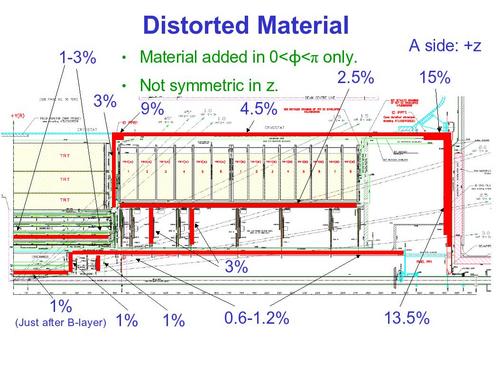
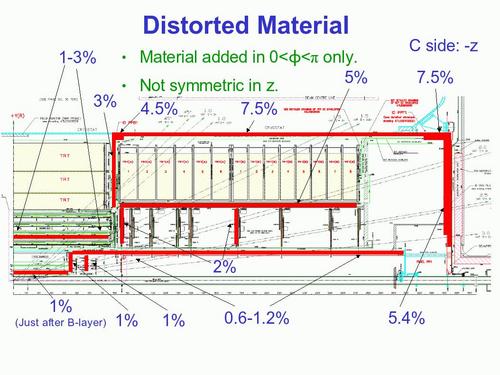
The plots below
show the total material in front of the active LAr
accordion, averaged over phi, for negative (left) and positive (right)
eta. The colour code is:
- black = ideal geometry ATLAS-CSC-01-00-00
- blue = misaligned geometry ATLAS-CSC-01-01-00
- red = matter distorted geometry ATLAS-CSC-01-02-00
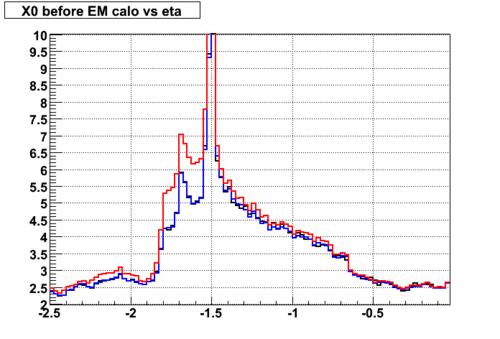
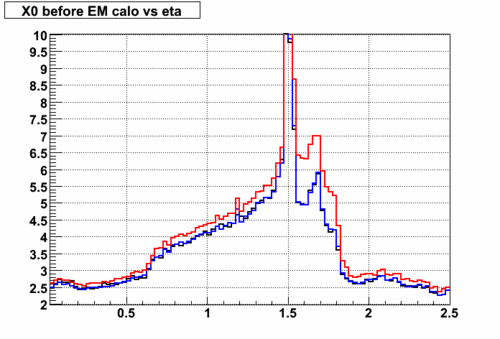
2. Results
A
simulated data sample consisting of single electrons with transverse
momenta between 7GeV to 80GeV was used to study the effect of
additional inactive material in the detector. The detector simulation
used to produce this data sample included distorted material
distributions in both the Inner Detector volume and the LAr calorimeter.
For the Inner
Detector, extra thin layers of material were added in the
azimuthal angle range of 0 < Φ < Π only. The amount of
material added was not uniform in the z direction. It varied
from a few percent of X0 on the active detector elements up to 1 X0 in
the areas occupied by services.
For the LAr
calorimeter, more material was added in the barrel cryostat
(~ 8-11% of X0), between barrel presampler and strips (~ 5% X0, always
for positive φ), and in the gap between the
barrel and endcap cryostats (factor 1.7 increase of material density).
On the whole,
the amount of extra material with respect to the
non-distorted simulation, grows from a few percent of a radiation
length at eta=0 up to ~ 1 X0 at 1.5 < eta < 1.8, and
then decreases towards higher values of eta. The amount of material
added in front of the active elements was larger than the uncertainty
on the material distribution.
The effect of
the extra inactive material on the electron trigger was
studied by comparing the trigger efficiency for φ >0, where there
was extra material added in the detector simulation, and for
φ <0, where no extra material was added. The result is shown in the
figure below. The efficiency is plotted as a function
of the kinematic variables of the electron candidate reconstructed
offline. A loose offline electron selection was used.
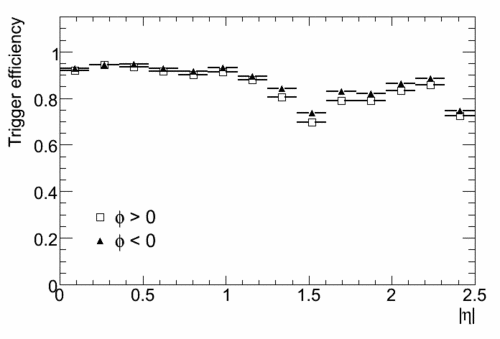
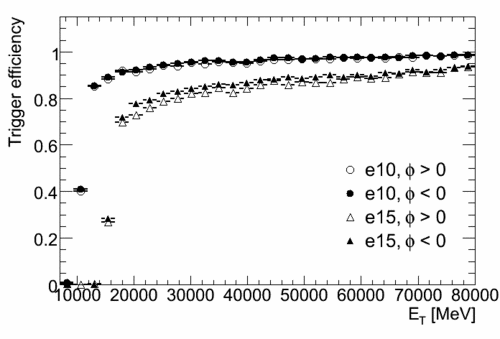
Effect
of additional inactive material in the detector on the electron
trigger efficiency. The trigger efficiency is compared for the nominal
material distribution (at phi<0) and for increased inactive material
(at phi>0) for the electron triggers e10 and e15 at the Event
Filter. The efficiency is plotted as a function of pseudorapidity, eta
(left) and transverse energy, ET (right) of the electron candidate
reconstructed offline. The left histograms correspond to the e15
trigger.
It can be seen
that the effect of the added material is more pronounced for the e15
trigger. This can be attributed to the increased energy loss in the
inactive material. This causes the electrons to fail the transverse
energy cuts applied in the trigger, which have a much higher threshold
in the case of the e15 trigger than for e10. This is also consistent
with the observed decrease of the effect for higher transverse momenta.
The remaining
plots below show the e15 (left) and e10 (right) efficiency versus eta.
With the same binning, the e15 and e15i efficiencies are identical (for
this data sample, 116408 events were accepted by the e15 trigger and
115935 by the e15i trigger).
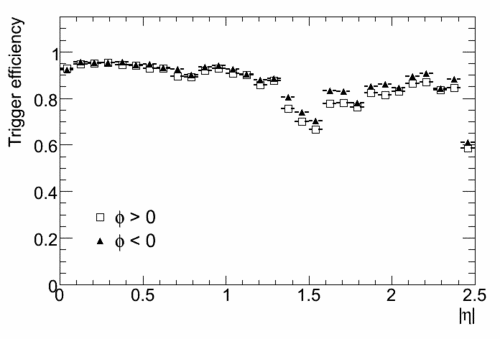
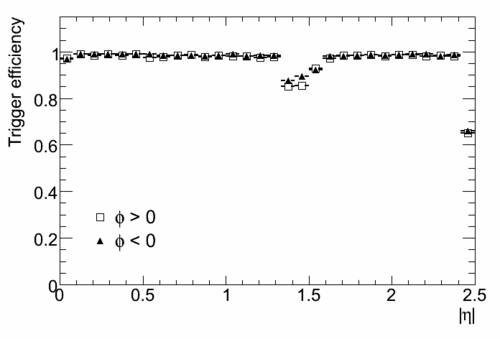
The analysis
program log file for this study is here.
RG 07/01/2008









